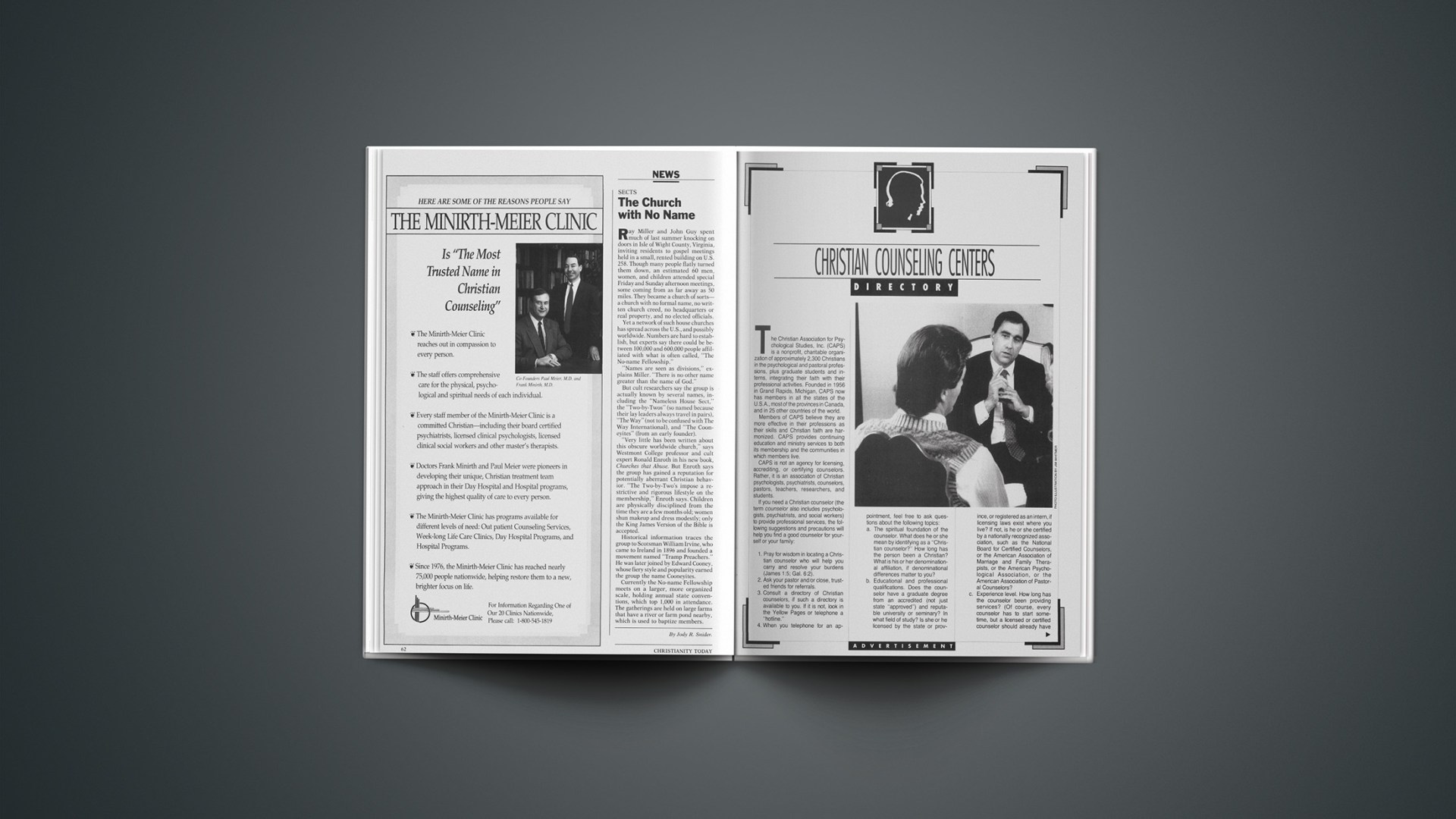Ray Miller and John Guy spent much of last summer knocking on doors in Isle of Wight County, Virginia, inviting residents to gospel meetings held in a small, rented building on U.S. 258. Though many people flatly turned them down, an estimated 60 men, women, and children attended special Friday and Sunday afternoon meetings, some coming from as far away as 50 miles. They became a church of sorts—a church with no formal name, no written church creed, no headquarters or real property, and no elected officials.
Yet a network of such house churches has spread across the U.S., and possibly worldwide. Numbers are hard to establish, but experts say there could be between 100,000 and 600,000 people affiliated with what is often called, “The No-name Fellowship.”
“Names are seen as divisions,” explains Miller. “There is no other name greater than the name of God.”
But cult researchers say the group is actually known by several names, including the “Nameless House Sect,” the “Two-by-Twos” (so named because their lay leaders always travel in pairs), “The Way” (not to be confused with The Way International), and “The Cooneyites” (from an early founder).
“Very little has been written about this obscure worldwide church,” says Westmont College professor and cult expert Ronald Enroth in his new book, Churches that Abuse. But Enroth says the group has gained a reputation for potentially aberrant Christian behavior. “The Two-by-Two’s impose a restrictive and rigorous lifestyle on the membership,” Enroth says. Children are physically disciplined from the time they are a few months old; women shun makeup and dress modestly; only the King James Version of the Bible is accepted.
Historical information traces the group to Scotsman William Irvine, who came to Ireland in 1896 and founded a movement named “Tramp Preachers.” He was later joined by Edward Cooney, whose fiery style and popularity earned the group the name Cooneyites.
Currently the No-name Fellowship meets on a larger, more organized scale, holding annual state conventions, which top 1,000 in attendance. The gatherings are held on large farms that have a river or farm pond nearby, which is used to baptize members.
By Jody R. Snider.









